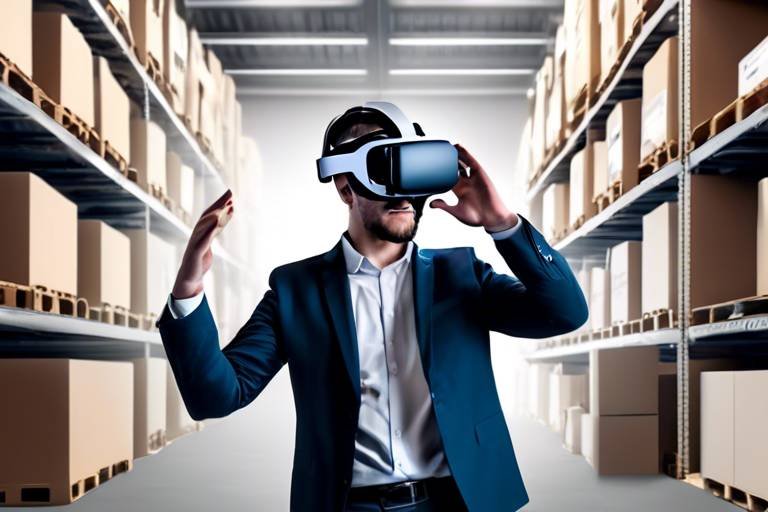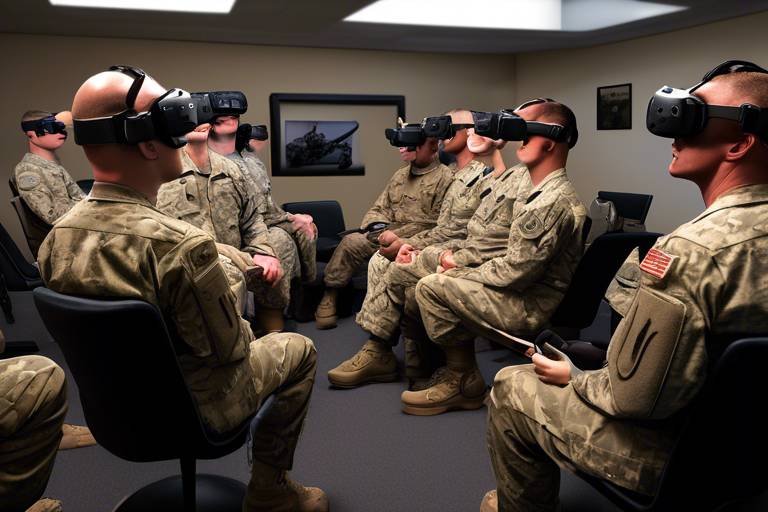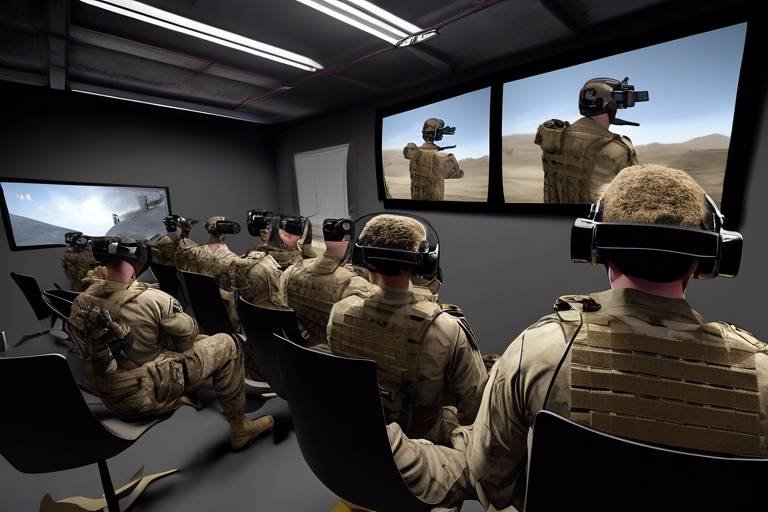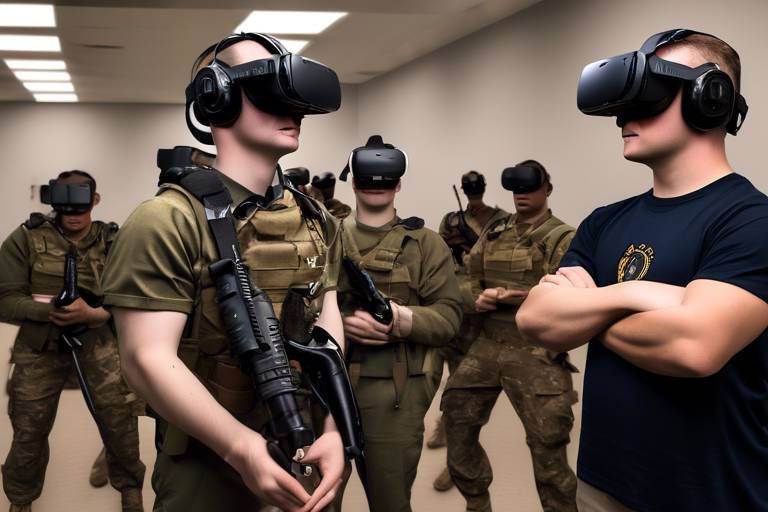How VR Helps in Preparing for Asymmetric Warfare Challenges
In today’s world, the nature of warfare has transformed dramatically. Traditional battlefields have given way to complex environments where asymmetric warfare reigns supreme. This is where Virtual Reality (VR) steps in as a game-changer. Imagine being able to step into a fully immersive environment that replicates the chaos of real combat scenarios, all while remaining in a safe and controlled space. VR technology is revolutionizing military training, equipping soldiers with the skills they need to tackle unpredictable and unconventional threats. But how exactly does VR enhance military readiness? Let’s dive deeper into its multifaceted role in preparing for asymmetric warfare challenges.
Virtual reality provides an unparalleled training experience, allowing military personnel to engage in realistic simulations that mirror the complexities of modern warfare. These immersive environments enable soldiers to practice critical skills such as situational awareness, tactical decision-making, and team coordination. The beauty of VR lies in its ability to create a controlled environment where mistakes can be made without real-world consequences. By exposing soldiers to a variety of scenarios, they can develop the agility and resourcefulness necessary for navigating the unpredictable landscapes of asymmetric warfare.
When it comes to military training, the advantages of VR simulations are numerous and compelling. Here are some key benefits:
- Cost-Effectiveness: VR training reduces the need for extensive physical resources and travel, making it a financially viable option for military organizations.
- Increased Safety: Soldiers can train in high-risk scenarios without the dangers associated with live exercises.
- Complex Environment Replication: VR can simulate diverse terrains and situations, preparing soldiers for a wide range of potential combat scenarios.
These benefits not only contribute to more effective training outcomes but also foster a culture of preparedness among military personnel, equipping them for the unpredictable nature of combat.
One of the most significant advantages of VR training is its cost-effectiveness. Traditional training methods often require extensive resources, including equipment, facilities, and travel. VR training minimizes these costs by allowing soldiers to train in a virtual environment. This means military organizations can allocate funds more efficiently, ensuring that every dollar spent goes towards enhancing training quality and outcomes.
With VR technology, military organizations can optimize resource allocation. The reduction in expenses associated with traditional training methods allows for better investment in advanced training systems. This not only maximizes training effectiveness but also increases engagement among personnel, as they find themselves immersed in realistic scenarios that challenge their skills.
Investing in VR training systems can lead to significant long-term savings for military organizations. By decreasing costs associated with equipment, facilities, and logistics involved in conventional training, VR emerges as a sustainable solution. Over time, these savings can be redirected towards research and development, further enhancing military capabilities.
In the heat of battle, quick decision-making is crucial. VR environments challenge military personnel to think on their feet and make rapid decisions under pressure. This kind of training enhances cognitive abilities and prepares soldiers for the unpredictable nature of asymmetric warfare scenarios. Imagine a soldier facing a sudden ambush; the skills honed in a VR setting can mean the difference between life and death.
Creating realistic combat scenarios in VR allows military personnel to experience various asymmetric warfare situations. This fosters adaptability and strategic thinking, which are essential for responding effectively in real-life conflicts. Through engaging with these simulations, soldiers learn to navigate the complexities of modern warfare, enhancing their readiness for the challenges that lie ahead.
Asymmetric warfare often involves unconventional tactics that can catch traditional forces off guard. Through VR training, soldiers learn to recognize and counter these tactics, improving their ability to respond to diverse threats. The immersive nature of VR allows for the exploration of various strategies, enabling soldiers to develop a toolkit of responses to unexpected situations.
One of the standout features of VR training is the immediate feedback it provides. After completing a simulation, soldiers can assess their performance and identify areas for improvement. This continuous feedback loop is crucial for enhancing combat readiness and strategic capabilities, as it encourages a mindset of constant growth and adaptation.
Q1: How does VR training differ from traditional military training?
A1: VR training offers immersive simulations that replicate real-world scenarios without the risks associated with live exercises. This allows soldiers to practice critical skills in a controlled environment.
Q2: What are the long-term benefits of investing in VR training technology?
A2: Investing in VR training can lead to significant long-term savings by reducing costs related to traditional training methods, while also enhancing the effectiveness and engagement of military personnel.
Q3: Can VR training prepare soldiers for unexpected combat situations?
A3: Absolutely! VR training is designed to expose soldiers to a variety of scenarios, enhancing their adaptability and decision-making skills in unpredictable combat situations.

The Role of VR in Military Training
This article explores the role of virtual reality (VR) technology in enhancing military training and readiness for asymmetric warfare, focusing on various applications, benefits, and future implications.
Virtual reality is not just a buzzword in the tech world; it's a game-changer in military training. Imagine stepping into a world where you can experience the chaos of combat without ever leaving a training facility. VR technology provides immersive training experiences that simulate real-world scenarios, allowing military personnel to develop crucial skills and decision-making capabilities in a controlled environment. This means that soldiers can practice their responses to various situations, from urban warfare to counter-terrorism operations, all while being fully engaged in a lifelike setting.
What makes VR so effective? It's all about immersion. When soldiers don VR headsets, they are transported into a different reality where they can interact with their surroundings. This immersion helps them to not only understand their roles but also to feel the weight of their decisions. For instance, they can practice navigating through a simulated city, identifying potential threats, and executing strategies—all while under the pressure of time constraints. This kind of training is invaluable, especially when preparing for asymmetric warfare, where the enemy may employ unconventional tactics.
Furthermore, VR allows for repetitive practice without the logistical challenges of traditional training. Instead of having to set up physical environments or gather equipment, military units can simply log into their VR systems and start training immediately. This flexibility means that training can happen more frequently, leading to better retention of skills and knowledge. As a result, soldiers become more adept at handling unpredictable combat situations.
In addition to practical skills, VR training can also enhance team dynamics. Soldiers can engage in collaborative missions, where they must communicate and strategize with their teammates in real-time. This not only builds camaraderie but also prepares them for the realities of working in teams during actual combat. The ability to simulate various team roles and scenarios ensures that every member understands their responsibilities and can adapt to changing situations.
Moreover, the feedback loop provided by VR training is another significant advantage. After each session, soldiers can receive immediate feedback on their performance. This allows them to assess what worked, what didn’t, and how they can improve. Continuous improvement is essential in military operations, and VR makes it easier to achieve. By analyzing their actions in a virtual environment, soldiers can refine their strategies and decision-making processes before facing real-life challenges.
In summary, the role of VR in military training is transformative. By offering immersive, repetitive, and collaborative training experiences, VR equips military personnel with the skills and confidence needed to face the challenges of asymmetric warfare. As technology continues to evolve, we can expect VR to play an even more significant role in preparing our forces for the complexities of modern combat.
- What is virtual reality (VR) training?
VR training uses computer-generated environments to simulate real-world scenarios, allowing military personnel to practice skills and decision-making in a controlled setting. - How does VR enhance decision-making skills?
VR environments place soldiers in high-pressure situations where they must make quick decisions, thereby improving their cognitive abilities and readiness for unpredictable combat scenarios. - Are there cost benefits to using VR for military training?
Yes, VR training reduces the need for physical resources and travel, leading to significant long-term savings for military organizations. - Can VR training replicate complex combat environments?
Absolutely! VR can create detailed and realistic simulations that mimic various combat situations, enhancing adaptability and strategic thinking.

Benefits of VR Simulation
This article explores the role of virtual reality (VR) technology in enhancing military training and readiness for asymmetric warfare, focusing on various applications, benefits, and future implications.
Virtual reality provides immersive training experiences that simulate real-world scenarios, allowing military personnel to develop crucial skills and decision-making capabilities in a controlled environment, ultimately enhancing their preparedness for asymmetric warfare.
When we think about the challenges faced in asymmetric warfare, the importance of effective training becomes crystal clear. VR simulations offer a groundbreaking solution that revolutionizes how military personnel prepare for unpredictable combat situations. One of the most significant advantages of using VR is its ability to create realistic and immersive environments that mimic the complexities of real-world scenarios. This means soldiers can practice their skills in a safe space, making mistakes without dire consequences.
Moreover, VR training is incredibly cost-effective. Traditional military exercises often require extensive resources, including travel, equipment, and personnel. With VR, many of these costs can be significantly reduced. For instance, instead of flying troops to a distant training ground, they can engage in high-quality simulations from their base. This not only saves money but also time, allowing for more frequent training sessions.
Another noteworthy benefit is the increased safety that VR simulations provide. In conventional training, the risk of injury is always present, especially in high-stakes environments. VR eliminates this risk, enabling soldiers to experience the intensity of combat without physical danger. This safety aspect encourages more open learning and experimentation, which is crucial for skill development.
Furthermore, VR allows for the replication of complex environments that would be difficult or impossible to recreate in real life. Whether it's navigating urban landscapes or engaging in guerrilla warfare, VR can simulate these conditions with remarkable accuracy. This capability helps soldiers to adapt to various scenarios, preparing them for the unexpected twists and turns of asymmetric warfare.
To summarize the benefits of VR simulation, let's take a look at the following table:
| Benefit | Description |
|---|---|
| Cost-Effectiveness | Reduces expenses related to travel and physical resources. |
| Increased Safety | Minimizes risk of injury during training exercises. |
| Complex Environment Replication | Simulates diverse combat scenarios that are hard to recreate physically. |
In addition to these benefits, VR simulations also enhance cognitive skills. Soldiers are often placed in high-pressure situations where they must make quick decisions. This not only sharpens their instincts but also builds confidence in their abilities to handle real-life combat scenarios. Think of it like a video game where each level challenges you to think faster and act decisively. The more you play, the better you get!
Lastly, VR training allows for immediate feedback. After each simulation, soldiers can review their performance, identify areas for improvement, and adjust their strategies accordingly. This continuous loop of feedback and improvement ensures that military personnel are always honing their skills, leading to a more prepared and adaptable force.
- What is VR training in the military? VR training uses virtual reality technology to simulate combat scenarios for military personnel, helping them develop skills in a safe environment.
- How does VR improve decision-making skills? VR environments place soldiers in high-pressure situations where they must make quick decisions, enhancing their cognitive abilities.
- Is VR training cost-effective? Yes, VR training reduces the need for physical resources and travel, making it a financially viable option for military organizations.

Cost-Effectiveness of VR Training
When it comes to military training, the costs can spiral out of control quickly. Traditional methods often involve extensive travel, the use of physical resources, and sometimes even the need for specialized facilities. However, virtual reality (VR) training has emerged as a revolutionary solution that not only reduces costs but also enhances the overall training experience. Imagine being able to conduct realistic combat exercises without the logistical nightmares associated with moving troops and equipment around. That's the beauty of VR!
One of the most significant advantages of VR training is its ability to minimize expenses. By utilizing VR, military organizations can cut down on travel costs and the need for physical training environments. Instead of flying personnel to remote training sites, soldiers can engage in immersive simulations right from their home bases. This not only saves money but also maximizes training time—no more wasted hours in transit!
Moreover, the cost-effectiveness of VR training extends beyond just immediate savings. Long-term financial benefits can be substantial. Let's break it down:
| Cost Factor | Traditional Training | VR Training |
|---|---|---|
| Travel Expenses | High | Minimal |
| Facility Maintenance | High | Low |
| Equipment Costs | High | Moderate |
| Logistics & Coordination | Complex | Simplified |
This table illustrates the stark contrast between traditional training methods and VR training in terms of cost factors. It's clear that VR not only provides a more financially viable option but also simplifies the entire training process.
Another critical aspect of cost-effectiveness is the ability to scale training programs without incurring additional expenses. With VR, military organizations can train multiple personnel simultaneously in various scenarios without needing to invest in additional resources. This scalability ensures that a larger number of soldiers can be trained effectively, enhancing overall military readiness without breaking the bank.
In conclusion, the is not just about saving money; it's about optimizing resources while delivering high-quality training outcomes. As military organizations continue to embrace this technology, they can expect to see significant improvements in both their training efficiency and their budget management.

Resource Allocation
Resource allocation in the military context is akin to a game of chess; every piece must be placed strategically to maximize effectiveness and minimize waste. With the advent of virtual reality (VR) technology, military organizations are finding new avenues to optimize how they allocate resources during training. Traditional training methods often come with hefty price tags, requiring extensive physical resources, travel expenses, and significant manpower. In contrast, VR training offers a more streamlined approach that allows military personnel to engage in realistic scenarios without the logistical headaches.
Imagine a scenario where soldiers can practice their skills in a fully immersive environment without the need for actual equipment or live ammunition. This not only reduces the wear and tear on physical assets but also allows for a more flexible training schedule. With VR, the need for large training facilities diminishes, as soldiers can train from anywhere, be it a base or even their homes. This flexibility leads to a more efficient use of time and resources, ensuring that every minute spent training is maximized for effectiveness.
Additionally, VR training can significantly cut down on the costs associated with travel. Instead of sending troops to distant training grounds, they can engage in high-quality simulations right where they are. This not only saves money but also allows for more frequent training sessions, which is crucial in maintaining readiness for asymmetric warfare scenarios.
Furthermore, the data collected from VR training can be invaluable for understanding resource allocation. By analyzing performance metrics, military leaders can identify which training methods yield the best results and adjust their resource distribution accordingly. This data-driven approach ensures that funds are directed towards the most effective training solutions, enhancing overall military preparedness.
In summary, the integration of VR technology into military training represents a revolutionary shift in resource allocation. By reducing dependency on physical resources, minimizing travel costs, and enabling data-driven decision-making, VR not only enhances training effectiveness but also ensures that military organizations can operate more efficiently in an increasingly complex and unpredictable world.
- What is virtual reality training?
Virtual reality training involves using immersive technology to simulate real-life scenarios, allowing military personnel to practice skills and decision-making in a controlled environment.
- How does VR improve military training?
VR enhances military training by providing realistic simulations, allowing for safe practice of complex scenarios, and enabling immediate feedback for continuous improvement.
- What are the cost benefits of VR training?
VR training reduces the need for physical resources and travel, leading to significant long-term savings while maintaining high-quality training outcomes.
- Can VR training adapt to different combat scenarios?
Yes, VR training can be tailored to replicate various asymmetric warfare situations, helping soldiers adapt to unconventional tactics and improve their strategic thinking.
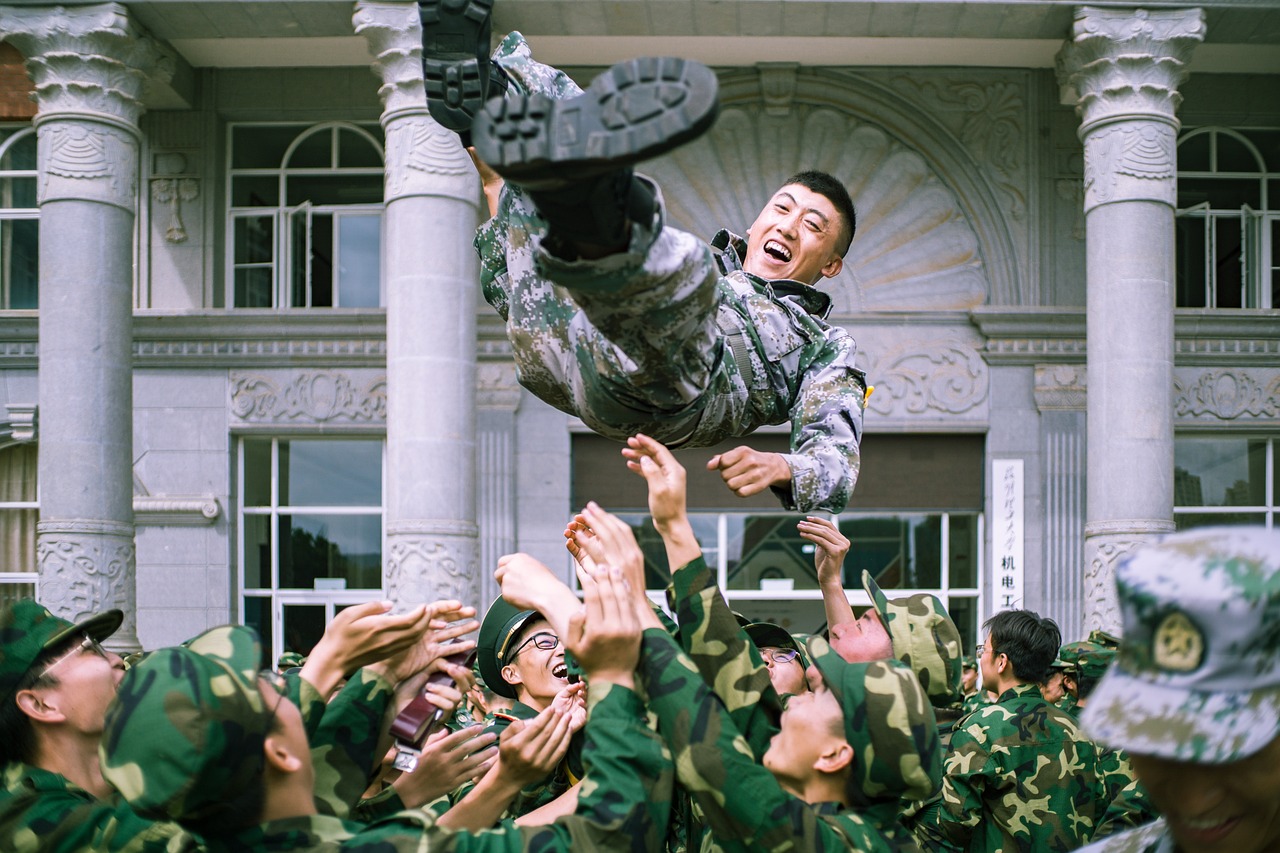
Long-Term Savings
Investing in virtual reality (VR) training systems can lead to significant long-term savings for military organizations. Traditional training methods often require substantial expenditures on physical resources, facilities, and logistical support. By shifting to VR, these costs can be dramatically reduced. For instance, consider the expenses associated with transporting troops to remote training sites, maintaining training equipment, and the wear and tear on vehicles. With VR, many of these costs can be eliminated or minimized.
Moreover, VR training allows military personnel to engage in realistic scenarios without the need for expensive props or extensive setup. Imagine a training session where soldiers can experience a variety of combat situations without the need for live ammunition or specialized equipment. This not only saves money but also reduces the risk of accidents and injuries during training.
In a practical sense, the long-term savings can be illustrated through a comparison of costs associated with traditional training versus VR training. The table below highlights these differences:
| Training Method | Initial Costs | Ongoing Costs | Long-Term Savings |
|---|---|---|---|
| Traditional Training | $500,000 | $100,000/year | N/A |
| VR Training | $300,000 | $20,000/year | $80,000/year |
As shown in the table, the initial investment in VR training systems is lower than that of traditional training methods, and the ongoing costs are significantly reduced. Over time, these savings can accumulate, allowing military organizations to reallocate funds to other critical areas, such as personnel development or advanced technology acquisition.
Additionally, the flexibility of VR training means that military personnel can train more frequently and effectively. They can repeat scenarios as often as needed without incurring additional costs for travel or equipment. This continual training helps maintain a high level of readiness, which is essential in today’s fast-paced and unpredictable combat environments.
In conclusion, the shift to VR training not only enhances the training experience but also provides substantial long-term financial benefits. By investing in this innovative technology, military organizations can ensure that they are better prepared for the challenges of asymmetric warfare while also being fiscally responsible.
- What is VR training? VR training uses virtual reality technology to create immersive training environments for military personnel.
- How does VR training save money? It reduces costs associated with travel, equipment, and facilities needed for traditional training methods.
- Can VR training replicate real combat scenarios? Yes, VR can simulate a variety of combat situations, allowing soldiers to practice their skills in a controlled setting.
- What are the benefits of using VR in military training? Benefits include enhanced decision-making skills, increased safety, cost-effectiveness, and improved adaptability to unconventional tactics.
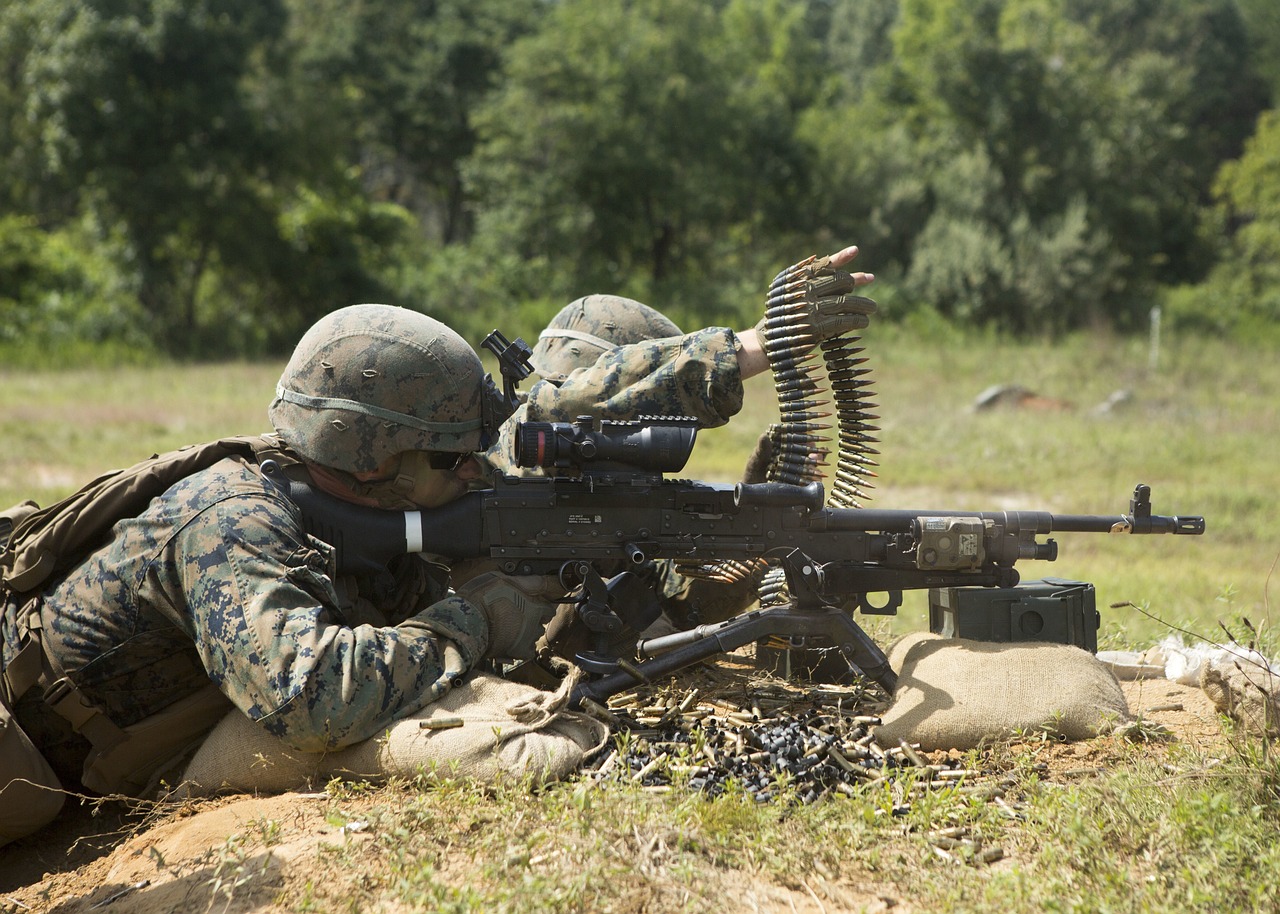
Enhancing Decision-Making Skills
In the realm of military training, the ability to make sound decisions under pressure is paramount. Virtual reality (VR) technology plays a crucial role in honing these decision-making skills, providing a lifelike environment where soldiers can face challenges that mimic the chaos of asymmetric warfare. Imagine being in a high-stakes situation where every second counts—this is where VR shines. It allows personnel to engage in scenarios that require rapid assessment and response, fostering a mindset that thrives under pressure.
One of the most significant advantages of VR in training is its ability to create stressful yet controlled environments. Soldiers can practice making decisions in situations that are unpredictable and intense, much like they would in real combat. This immersive experience not only helps them learn to think on their feet but also builds their confidence. For instance, a soldier might find themselves in a virtual urban battlefield, needing to decide whether to engage an enemy or seek cover. Each choice they make has immediate consequences in the simulation, reinforcing the importance of their decisions.
Additionally, the feedback mechanism integrated into VR training is invaluable. After each scenario, soldiers receive immediate feedback on their performance, which is essential for growth. They can analyze what went right or wrong, allowing for a deeper understanding of their decision-making processes. This cycle of practice and feedback creates a continuous improvement loop, enabling military personnel to refine their skills consistently. For example, a soldier might learn that a particular decision led to a successful outcome in one scenario but resulted in failure in another, prompting them to adapt their strategy for future encounters.
Moreover, VR training can be tailored to address specific challenges that soldiers may face in asymmetric warfare. This adaptability is crucial, as it allows for a focus on unconventional tactics that adversaries may employ. By simulating various scenarios, soldiers learn to recognize patterns and anticipate enemy movements, enhancing their strategic thinking. The more they practice, the more instinctive their decision-making becomes, which is essential when facing real-world threats.
In summary, VR technology is revolutionizing military training by significantly enhancing decision-making skills. By immersing soldiers in realistic scenarios and providing immediate feedback, VR not only prepares them for the unpredictability of asymmetric warfare but also instills a sense of confidence and adaptability that is vital for success on the battlefield. As we look to the future, the integration of VR in military training will undoubtedly continue to evolve, offering even more sophisticated tools for developing these essential skills.
- What is the primary benefit of using VR in military training?
VR provides an immersive training experience that enhances decision-making skills and prepares soldiers for real-world combat scenarios. - How does VR improve decision-making under pressure?
By simulating high-stress environments, VR challenges soldiers to make quick decisions, helping them develop the ability to think critically in chaotic situations. - Can VR training be customized for specific scenarios?
Yes, VR training can be tailored to address various asymmetric warfare tactics and challenges, allowing for a more focused training approach. - What role does feedback play in VR training?
Immediate feedback helps soldiers assess their performance, learn from their mistakes, and continuously improve their decision-making skills.

Realistic Combat Scenarios
This article explores the role of virtual reality (VR) technology in enhancing military training and readiness for asymmetric warfare, focusing on various applications, benefits, and future implications.
Virtual reality provides immersive training experiences that simulate real-world scenarios, allowing military personnel to develop crucial skills and decision-making capabilities in a controlled environment, ultimately enhancing their preparedness for asymmetric warfare.
VR simulations offer numerous advantages, including cost-effectiveness, increased safety, and the ability to replicate complex environments. These benefits contribute to more effective training outcomes and better preparedness for unpredictable combat situations.
By reducing the need for physical resources and travel, VR training becomes a financially viable option for military organizations, allowing them to allocate funds more efficiently while still achieving high-quality training results.
With VR technology, military organizations can optimize resource allocation by minimizing expenses related to traditional training methods while maximizing training effectiveness and engagement among personnel.
Investing in VR training systems can lead to significant long-term savings for military organizations, as they reduce costs associated with equipment, facilities, and logistics involved in conventional training.
VR environments challenge military personnel to make quick decisions under pressure, enhancing their cognitive abilities and preparing them for the unpredictable nature of asymmetric warfare scenarios.
Creating in VR allows military personnel to experience various asymmetric warfare situations, fostering adaptability and strategic thinking required to respond effectively in real-life conflicts. The immersive nature of VR transports soldiers into a world where they can encounter a range of threats and challenges that mimic actual combat environments. This not only boosts their confidence but also sharpens their instincts, which are crucial when facing unpredictable adversaries.
For instance, VR can simulate urban warfare, jungle combat, or even cyber warfare, where soldiers must navigate intricate terrains and complex situations. Each scenario is designed to replicate the chaos and unpredictability of real battles, thereby enhancing the soldiers' ability to think on their feet. This form of training is akin to a pilot flying a flight simulator before taking the controls of a real aircraft; it prepares them for the unexpected.
Moreover, the adaptability gained through VR training is invaluable. Soldiers learn to recognize unconventional tactics employed by adversaries, which are often the hallmark of asymmetric warfare. For example, they might encounter scenarios where they must deal with improvised explosive devices (IEDs) or asymmetric ambushes, requiring quick thinking and strategic planning. This experience is vital in ensuring that they are not only reacting to threats but also anticipating them.
In addition to enhancing tactical skills, VR training provides immediate feedback. Soldiers can assess their performance in real-time, which allows them to identify mistakes and make necessary adjustments. This continuous loop of practice and feedback leads to ongoing improvement in their combat readiness and strategic capabilities. The ability to learn from each encounter in a safe environment is a game-changer, as it allows for a level of experimentation that would be impossible in live training.
Through VR training, soldiers learn to recognize and counter unconventional tactics employed by adversaries, improving their ability to respond to diverse threats in asymmetric warfare.
VR training provides immediate feedback, enabling soldiers to assess their performance and make necessary adjustments, ultimately leading to continuous improvement in their combat readiness and strategic capabilities.
- What is virtual reality (VR) training?
VR training uses immersive technology to create realistic simulations for military personnel, allowing them to practice and hone their skills in a controlled environment.
- How does VR enhance military readiness?
By providing realistic combat scenarios and immediate feedback, VR training prepares soldiers to make quick decisions and adapt to unpredictable situations.
- What are the cost benefits of VR training?
VR training reduces the need for physical resources and travel, leading to significant long-term savings for military organizations.
- Can VR training replicate real combat situations?
Yes, VR can simulate a wide range of combat environments, helping soldiers to prepare for various scenarios they might face in the field.

Adapting to Unconventional Tactics
In today's rapidly evolving battlefield, the ability to adapt to unconventional tactics is crucial for military personnel. Asymmetric warfare presents unique challenges where traditional strategies may fall short. This is where virtual reality (VR) training comes into play, allowing soldiers to immerse themselves in scenarios that mimic the unpredictable nature of modern conflicts. Imagine stepping into a virtual world where every corner could hide a new threat, and every decision could mean the difference between success and failure. This is the reality that VR training aims to create.
Through VR simulations, soldiers can engage with a variety of unconventional tactics employed by adversaries, such as guerrilla warfare, cyber attacks, and even psychological operations. By experiencing these situations firsthand, they learn not only to recognize these tactics but also to develop effective countermeasures. For instance, a soldier might find themselves in a simulation where they must identify a hidden enemy ambush or respond to a sudden cyber threat that disrupts their communication systems.
The immersive nature of VR allows for a deeper understanding of these tactics, as it challenges soldiers to think critically and react swiftly. They can practice responding to scenarios that require quick thinking and adaptability, such as:
- Assessing the environment for potential threats
- Utilizing available resources effectively
- Coordinating with team members in high-pressure situations
Additionally, VR training fosters a mindset of continuous learning. After each simulation, soldiers receive immediate feedback on their performance, highlighting areas for improvement. This feedback loop is essential for honing their skills and preparing for the unpredictability of real-life combat. Just like a sports team reviewing game footage to improve strategy, military personnel can analyze their VR training sessions to refine their approach to unconventional warfare.
In conclusion, adapting to unconventional tactics is not just about understanding the enemy; it’s about preparing for a range of unpredictable scenarios. VR technology equips soldiers with the tools they need to navigate these challenges, ensuring they are not only reactive but also proactive in their approach to warfare. The future of military training lies in the ability to simulate the unexpected, and VR is at the forefront of this transformation.
- What is asymmetric warfare?
Asymmetric warfare refers to conflicts where opposing forces differ significantly in military capabilities or tactics, often leading to unconventional strategies by the weaker party.
- How does VR training improve military readiness?
VR training enhances military readiness by providing immersive scenarios that develop decision-making skills, adaptability, and the ability to respond to unconventional tactics.
- What are some benefits of using VR for military training?
Benefits include cost-effectiveness, increased safety, realistic simulations, and the ability to provide immediate feedback for continuous improvement.
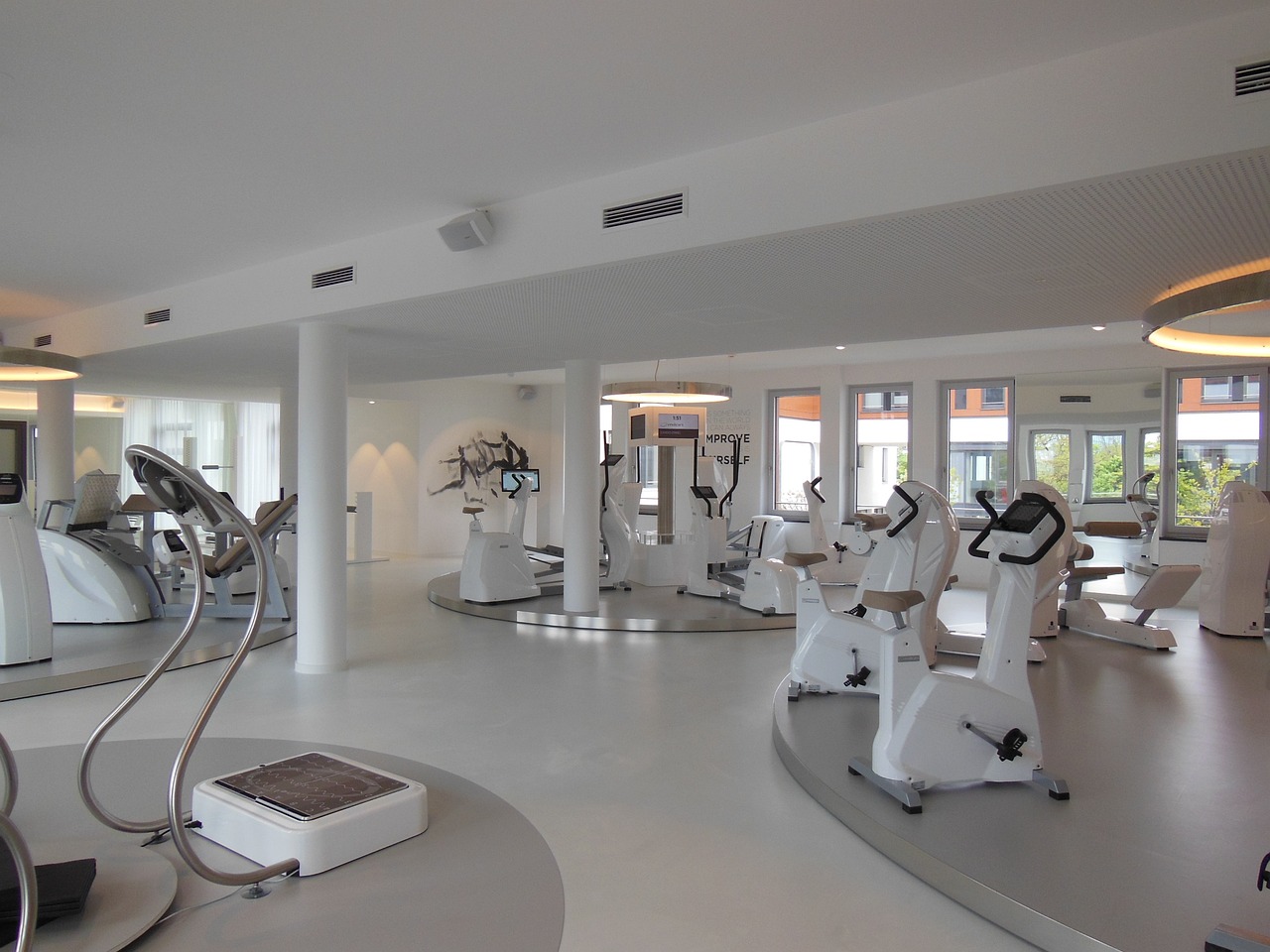
Feedback and Improvement
One of the most powerful aspects of virtual reality (VR) training is its ability to provide immediate feedback. Imagine being in a high-stakes combat scenario where every second counts. In traditional training environments, soldiers may have to wait days or even weeks to receive feedback on their performance. However, with VR, they can instantly review their actions, decisions, and outcomes. This immediate feedback loop allows military personnel to assess what went right, what went wrong, and how they can improve. It’s like having a personal coach by your side, guiding you through the intricacies of combat.
Furthermore, this feedback is not just qualitative; it can be quantitatively analyzed. VR systems can track various metrics, such as reaction time, decision-making speed, and accuracy of actions. For instance, a soldier might engage in a VR simulation where they have to navigate through a complex urban environment while under fire. After the simulation, they can receive a detailed report that includes:
| Metric | Performance | Benchmark |
|---|---|---|
| Reaction Time | 1.2 seconds | 1.0 seconds |
| Decision Accuracy | 85% | 90% |
| Engagement Success | 75% | 80% |
This table illustrates how VR training can help identify specific areas where a soldier might need improvement. By focusing on these metrics, military personnel can develop targeted strategies to enhance their skills. For example, if a soldier's reaction time is slower than the benchmark, they can engage in additional VR scenarios designed to improve their speed and efficiency under pressure. This kind of tailored training is invaluable in preparing for the unpredictable nature of asymmetric warfare.
Moreover, the immersive nature of VR allows soldiers to experience scenarios repeatedly without the logistical challenges of traditional training. They can practice various tactics, experiment with different approaches, and learn from their mistakes in a safe environment. This iterative learning process fosters a culture of continuous improvement. Just like a musician who practices a piece over and over until it’s perfect, soldiers can refine their skills until they can respond instinctively during real-world operations.
In conclusion, the feedback and improvement mechanisms embedded in VR training are transformative. They not only enhance individual performance but also contribute to overall unit readiness. By harnessing the power of real-time analytics and immersive scenarios, military organizations can ensure that their personnel are not just prepared but are also constantly evolving to meet the challenges of asymmetric warfare.
- What is virtual reality training?
Virtual reality training uses computer-generated simulations to create immersive environments where military personnel can practice skills and tactics in a controlled setting.
- How does VR improve decision-making skills?
VR environments require soldiers to make quick decisions under pressure, enhancing their cognitive abilities and preparing them for real-life combat scenarios.
- Is VR training cost-effective?
Yes, VR training reduces the need for physical resources and travel, leading to significant long-term savings for military organizations.
- Can VR training replicate real-world combat scenarios?
Absolutely! VR technology can create highly realistic combat scenarios, allowing soldiers to experience various asymmetric warfare situations.
Frequently Asked Questions
- What is VR training and how does it work in military contexts?
VR training, or virtual reality training, immerses military personnel in simulated environments that mimic real-world scenarios. By wearing VR headsets, soldiers can engage in lifelike combat situations, practicing their skills and decision-making abilities in a safe and controlled setting. This method allows them to prepare for the unpredictable challenges of asymmetric warfare.
- What are the main benefits of using VR for military training?
There are several key benefits to utilizing VR in military training, including:
- Cost-effectiveness: Reduces the need for physical resources and travel.
- Increased safety: Minimizes risks associated with live training exercises.
- Complex environment replication: Allows for the simulation of diverse combat situations.
These advantages lead to more effective training outcomes and better preparedness for unpredictable combat scenarios.
- How does VR enhance decision-making skills in soldiers?
VR environments are designed to challenge military personnel to make quick decisions under pressure. By simulating high-stakes situations, soldiers can develop their cognitive abilities and learn how to respond effectively to the chaotic nature of asymmetric warfare. This training helps them become more adaptable and strategic thinkers.
- Can VR training prepare soldiers for unconventional tactics used by adversaries?
Absolutely! VR training allows soldiers to experience various asymmetric warfare scenarios, including unconventional tactics. By recognizing and countering these tactics in a virtual environment, military personnel can improve their ability to respond to diverse threats effectively, ensuring they are well-prepared for real-life conflicts.
- What role does feedback play in VR military training?
Feedback is a crucial component of VR training. Soldiers receive immediate performance assessments, enabling them to identify areas for improvement and make necessary adjustments. This continuous feedback loop promotes ongoing development in combat readiness and strategic capabilities, ensuring that personnel are always improving their skills.






